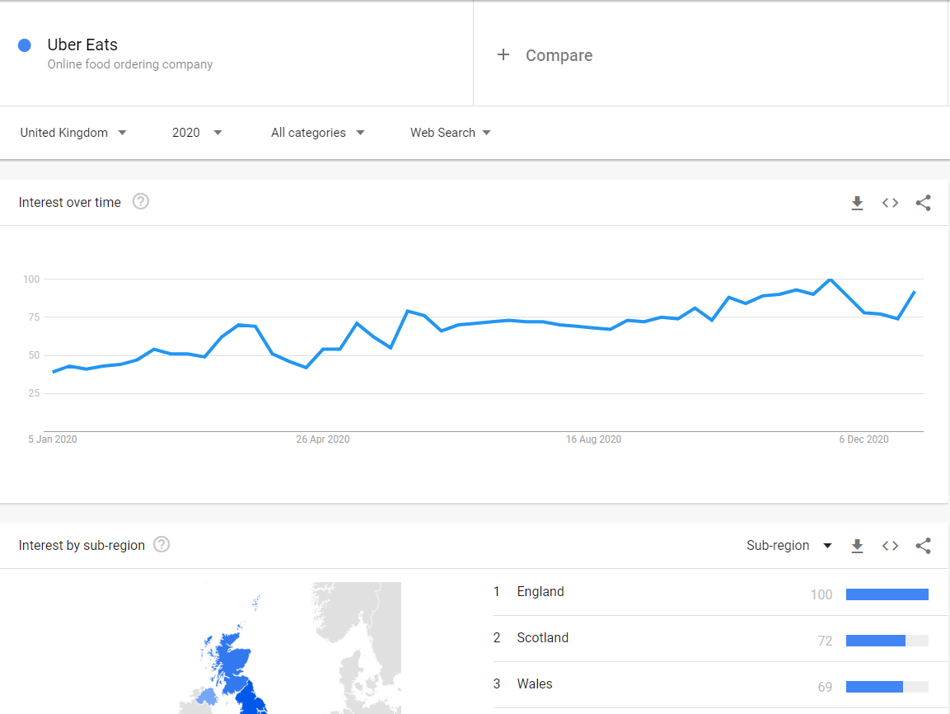What is demand generation?
Learn more about demand generation, what it is, why it’s important, and how it can help your business grow.

Contents:
- What is demand generation?
- Why is demand generation important?
- Demand generation vs lead generation
- Demand generation vs ABM
- Demand generation channels & activities
- How to create a demand generation strategy
- How to measure demand generation campaigns
- Demand generation campaign ideas
What is demand generation?
Demand generation is any activity that drives awareness, interest or desire in your product or service.
The objective of any demand generation campaign is to connect with your prospects and bring them further into your marketing and sales processes.
Prospects may not have any previous knowledge of your brand, so an important aspect of demand generation is to focus on the challenges your audience is facing and to educate and inform them on how your product or service solves them.
Typically demand generation activities are at the top of the funnel, unlike lead generation or ABM campaign approaches, where users are highly segmented, and receive more personal one-to-one experiences.
Why is demand generation important?
Demand generation is important because, at any one time, only 5% of your target audience will be in-market.
According to research from Ehrenberg-Bass, 95% of B2B buyers are not in the market for products or services. This means that, without brand and demand generation campaigns creating interest in your offering, your lead generation campaigns will likely fall on deaf ears.
According to the report, companies change their providers of services such as finance, legal, IT, telecoms etc. around every five years.
This means that only 20% are in the market for those services in a given year and just 5% in a given quarter. The other 95% are not in the market at all.
Demand generation activities help to bridge the gap, connecting your business with those not in-market, so, when the time comes, your brand will have the mental availability to be top of thinking for that given service.
Demand generation requires patience and long-term thinking, but when done right, it’s effective.
Demand generation vs lead generation
A lead is anyone who has shown interest in a company’s products or services but may not yet be qualified to buy.
Whereas demand generation is the process of getting users to connect with your brand, lead generation is the activity to get prospects to enquire about your product or services, with the end goal of generating a sale.
Demand generation activities help to create leads through educating and engaging campaigns, however, the typical goal of a demand gen campaign is to further the user’s journey through the sales process, rather than execute the enquiry.
Learn more about lead generation strategies and how you can implement them into your marketing.

Demand generation vs Account-Based Marketing (ABM)
Account-Based Marketing (ABM) is a more focused approach to campaigns. Rather than aiming your message at a wide network of potential customers, you are targeting a select number of companies.
Whilst demand generation campaigns are segmented by key demographics, industries and challenges, they are naturally broader in scope than ABM.
In Account-Based Marketing, you may even solely focus on select individuals in a company and target them directly. In this type of marketing, we are focussing on quality over quantity.
Demand generation channels & activities
Several channels and activities can be used for demand generation activities, including, but not limited to:
Content:
- Blogs
- Whitepapers & eBooks
- Videos
- Infographics
- Podcasts
- Brochures
- Flyers
- Webinars
Digital Marketing:
- SEO
- PPC
- Social Media
- Content Syndication
- Influencer Marketing
- Affiliate Marketing
- Native Advertising

Traditional Marketing:
- Events
- PR
- Telemarketing
- Direct Mail
- Signage
- Billboards
- Print Advertising
How to create a demand generation strategy
When it comes to creating a demand generation strategy, there are no set rules. Each strategy will be different, and it will all depend on many different factors:
- Your industry
- Your product
- Target audience demographics
- Your competitors
Just like any strategy, you need to use your research about your target market to create personalised content, which will appeal to that group of users and their unique challenges.
When researching your audience and its needs, it’s important to look internally as well as externally. Within your business, you already have access to some of the most important audience research tools at your disposal; your customers.
You must take the time to understand your existing audience, what brought them to your company, why they choose to use your company, and what needs you are and are not meeting for them currently.
Once you understand this, you will be in a much better position to reach and communicate with similar prospects.
As well as looking internally, we also recommend using third-party tools to gain a greater understanding of what your audience is searching for online.
- Google Ads Keyword Planner – Keyword Planner is a fantastic tool for finding search volumes for your target keywords and phrases, use this as a foundation for building your content calendars.
- Google Trends – alongside Keyword Planner, Google Trends is another fantastic tool for better understanding your customer’s searching habits.
- Google Listings – the “People also ask” feature within Google’s organic listings is an excellent resource to learn what users are searching around a given topic.
- Answer The Public – if you’re stuck on content ideas, Answer The Public will be your new best friend. The tool scrapes Google to provide a list of comparisons, prepositions and searches around a provided keyword to give you a list of ideas to delight your audience.

At the end of the research project, you should have a firm understanding of your prospect’s:
- Problems – what actively impairs your audience’s day to day activities?
- Desires – what motivates your audience?
- Challenges – what gets in the way of your audience achieving their desires?
By understanding this, you can begin to create content that is tailored towards your audience, and thus more likely to connect and engage.
How to measure demand generation campaigns
The success of your demand generation campaigns, and what you choose to measure will likely fall back to the initial objectives of your activities.
For example, if the goal was to educate new prospects about a new product, you could measure unique Sessions to the product’s landing page, as well as downloads of its technical specifications.
If your goal was to improve brand awareness, you could measure if search volume for your brand increased as a result of the campaign – and potentially if it lead to an increase in your share of search.
Demand generation campaign ideas
Stuck on ideas for your first demand generation campaign? Here are a few examples of effective activities you could launch to engage and connect with your prospects.
- Launch a podcast – Podcasts are becoming a valuable resource for creating connections with audiences through long-form communication. Whether you start your own or sponsor someone else’s, the medium can be a fantastic way to position yourself as a thought-leader on topics your prospects care about. Speaking of, Generate UK have a marketing podcast that you can subscribe to on all major platforms.
- Host an event or webinar – if demand generation is all about “getting people through the door” then hosting an event takes this literally. Events and webinars are a great opportunity to share your knowledge with a room of engaged individuals that are eager to learn.

- Work with industry influencers – leverage the trust of a popular influencer or industry figurehead to promote your brand or product. Common examples of campaigns include webinars, podcast appearances, promoted social content or joint reports.
- Share your best content (for free) – no one likes a paywall or giving their details away, so remove the barrier. Share whitepapers, eBooks and reports for free. However, you need to ensure that the content has value, otherwise, you may not get the reader to come back for more!
- Utilise your existing customers with case studies – your customers should be your biggest marketing asset. Share the successes that existing businesses are having with your products and services, and use testimonials and case studies to share their story with prospects.
- Promote award nominations and wins – entering (and hopefully winning) awards can be a great way to improve the reputation of your brand, and build trust with prospects. Make sure to promote the news of your nomination and win on social media.
- Create a free tool or resource – are there any ways you can make your prospects lives a little easier with a free tool, app or resource? For example, advertising company, WordStream have a free Google Ads grader to help marketers understand their current performance, and get recommendations on how to improve.
Generate UK: A demand generation agency
Generate UK is a full-service digital marketing agency that empowers industry-leading B2B & professional services companies to generate growth online.
We help brands grow at all stages of the funnel, with the expertise to support your organisation, whether you are looking to:
- Boost your awareness
- Improve demand
- Get more leads
- Generate more sales
Our top-of-funnel and brand marketing expertise will help you get in front of the right audience, with a message that’s designed to leave them wanting more.
Through a considered strategy of identifying your key audiences and understanding what matters to them, we deliver impactful tailored messaging through targeted advertising and owned channels.
- Get seen by the right people
- Grow your brand and product awareness
- Connect and engage with your target customers
Let’s have a chat to discuss how we can help you generate growth through marketing.